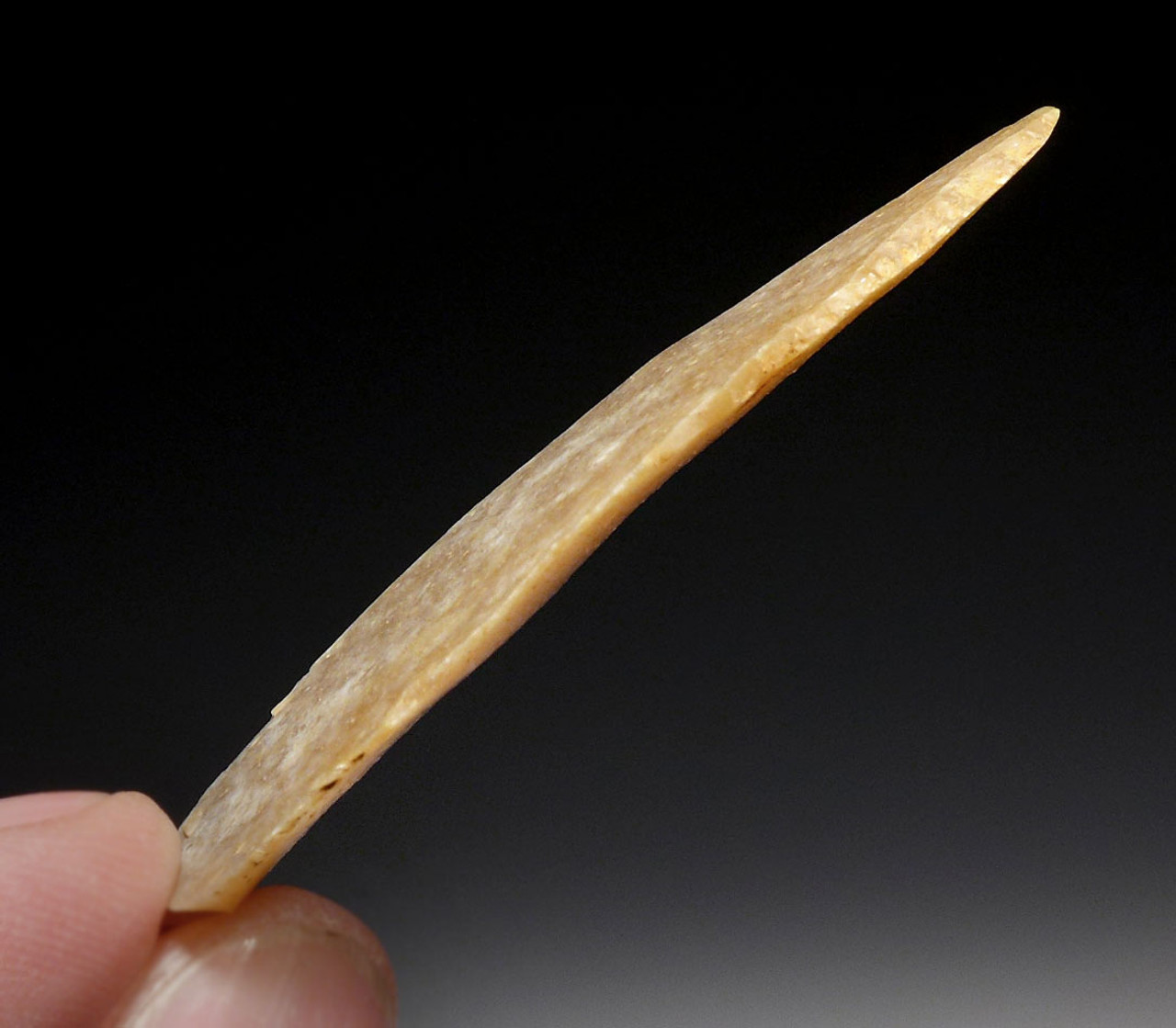Product Description
This is a choice example of a LEAF BLADE of the Aurignacian phase of the Upper Paleolithic Period. It was made by striking a blade core to split off a thin flake which was then fashioned into a point. This tool was made by Cro-Magnon humans who once lived in what is the Vezere Valley of the famous Department of Dordogne, France, a major locale of Upper Paleolithic occupation in prehistory. Tools like this are specifically attributed to the Upper Paleolithic Period. An excellent collection set with traits only found on authentic specimens, mineral and sediment deposits throughout.
No collection of Paleolithic stone tools would be complete without the inclusion of fine examples dating to the Upper Paleolithic Period. This was an era of many of the most famous human development milestones. In this period, the technology developing around the planet took place at slightly different times but globally, humanity was taking a huge turn for the better, and in overall unison. A new level of tool production and craftsmanship emerged unlike ever seen before. Modern humans first arrive on the scene and with them, they bring many new inventions - most notable is the concept of artistic expression as seen in the famous cave paintings that were only produced in this era.
SEE MORE UPPER PALEOLITHIC TOOLS
HISTORY
With this offer comes a RARE opportunity to acquire authentic artifacts from a well-known prehistoric rock shelter (all site information provided to buyer) from what is considered one of the most important regions of human prehistory in Europe - the Dordogne Region in France. These specimens come from a collection dating back to the early 1900's by a French collector who excavated the Paleolithic layers of the shelter to reveal a level of Mousterian (Neanderthal) occupation lying directly below another level of Upper Paleolithic (Cro-Magnon) occupation. Such a collection provides a fantastic and RARE window into long-term human prehistoric habitation spanning two Paleolithic periods and from Neanderthal to Cro-Magnon life. In this collection were not only tools from both periods but also, many fossil remains of animals killed and eaten by these prehistoric humans. The remains included numerous bones and teeth of horse, red deer, reindeer, aurochs and steppe bison. The presence of animal bone fragments indicates the process of smashing bones to get to the marrow which was prized for its rich food value as much if not more than the meat itself. Collections like this come maybe once in a lifetime, if that. The majority of this collection is being retained by a museum. This rare chance to acquire such objects will end when we sell out the limited number of specimens we have. Because collecting these artifacts has been off-limits for decades, genuine fine grade Mousterian Neanderthal tools such as this specimen are most certain to continue to appreciate in value as time goes on.
 US DOLLAR
US DOLLAR
 EURO
EURO
 AUSTRALIAN DOLLAR
AUSTRALIAN DOLLAR
 CANADIAN DOLLAR
CANADIAN DOLLAR
 POUND STERLING
POUND STERLING














